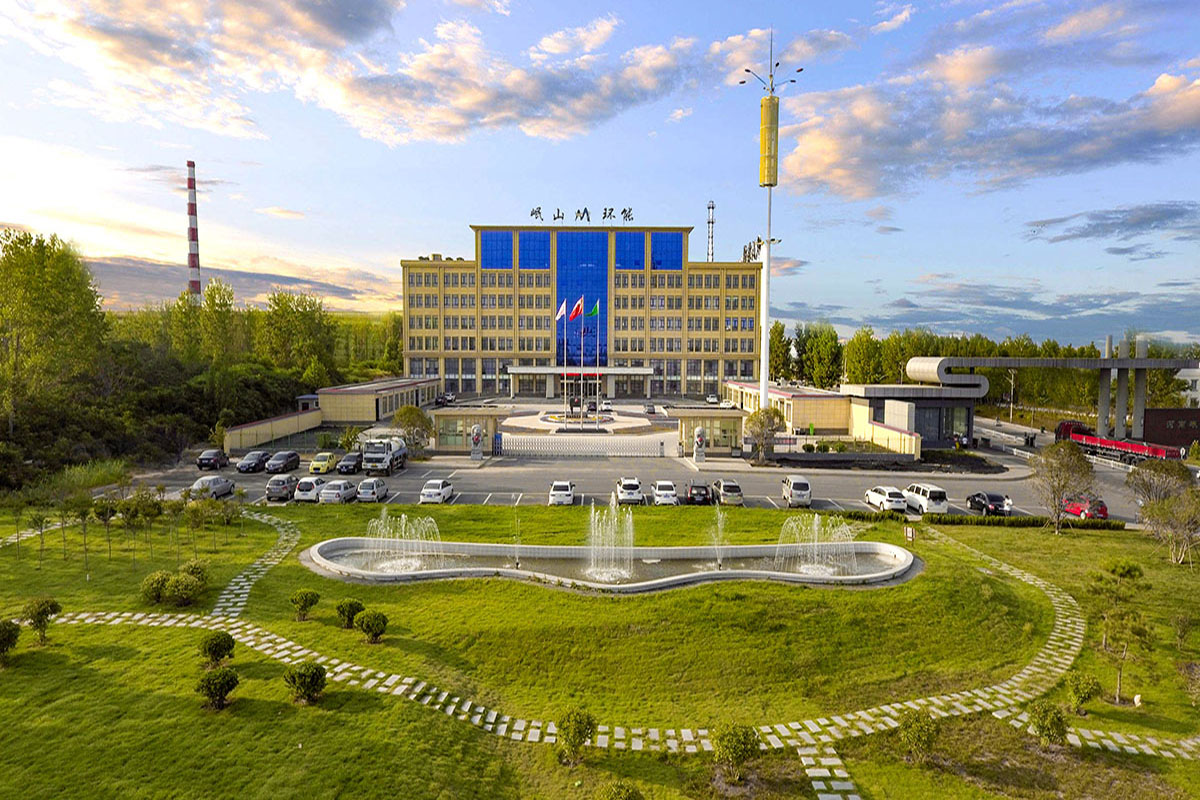In 2015, the Ministry of Land and Resources formulated the "Technical Indicators and Calculation Methods for Comprehensive Utilization of Mineral Resources", which upgraded the "three rates" of comprehensive utilization of mineral resources from industry standards to "indicator requirements". On the one hand, the mine design and development utilization plan were strictly reviewed, and those that did not meet the design indicators could not pass the review. On the other hand, in terms of mine supervision and management, the "three rate" indicators will be included in information disclosure. Mining enterprises that do not meet the "three rate" indicators will be restricted or not allowed to handle procedures such as mining rights extension, transfer, and change, in order to promote mining enterprises to attach importance to mineral resource protection, rational development, and comprehensive utilization.
This article collects the requirements for the "three rates" of comprehensive utilization of common precious metals, non-ferrous metals, and rare metals, as follows:
1. Gold mines
1.1 Leader indicators
1.1.1 The recovery rate of open-pit mining should not be less than 96%, and the recovery rate of underground gold mining with stable surrounding rock should not be less than 95%.
1.1.2 The recovery rate of conventional flotation process should not be less than 95%.
1.2 General indicators
1.2.1 The recovery rate of open-pit mining should not be less than 93%, and the recovery rate of underground gold mining with stable surrounding rock should not be less than 88%.
1.2.2 The recovery rate of conventional flotation process should not be less than 85%.
1.3 Minimum indicators
1.3.1 The recovery rate of open-pit mining should not be less than 90%. The recovery rate of underground gold mining with stable surrounding rock should not be less than 85%, and the recovery rate of underground gold mining with unstable and extremely unstable surrounding rock should not be less than 75%.
1.3.2 The recovery rate of conventional flotation process should not be less than 80%.
When the co occurring components such as silver, sulfur, copper, lead, and zinc reach the content listed in Table 1, comprehensive evaluation and recycling should be strengthened. The specific utilization level of a mine should be based on the indicators determined by the mine design or development and utilization plan.
2 Silver mines
2.1 Leader indicators
2.1.1 The recovery rate of underground mining should not be less than 95%.
2.1.2 The recovery rate of ore dressing should not be less than 92%.
2.2 General indicators
2.2.1 The recovery rate of underground mining should not be less than 88%.
2.2.2 The recovery rate of ore dressing should not be less than 86%.
2.3 Minimum indicators
2.3.1 The recovery rate of open-pit mining should not be less than 92%, and the recovery rate of underground mining should not be less than 85%.
2.3.2 According to the ore grade, the recovery rate of ore dressing should not be lower than the requirements in Table 2.
When the co associated components such as copper, lead, and zinc reach the content listed in Table 3, comprehensive evaluation and recycling should be strengthened, and the comprehensive utilization rate of co associated minerals should not be less than 40%.
3 tantalum niobium ore
3.1 General indicators
3.1.1 The recovery rate of open-pit mining should not be less than 95%, among which the recovery rate of mines with large changes in ore body morphology, thin ore bodies, and poor rock stability is generally not less than 92%. The recovery rate of underground mining should not be less than 70%.
3.2 Minimum indicators
3.2.1 The open-pit mining recovery rate should not be less than 90%, among which the mining recovery rate for mines with large changes in ore body morphology, thin ore bodies, and poor rock stability should not be less than 87%. The recovery rate of underground mining should not be less than 65%.
3.2.2 According to the ore grade, the recovery rate of ore dressing should not be lower than the requirements in Table 5.
When tungsten, lithium, rubidium, cesium, beryllium, niobium, lithium, rubidium, cesium, beryllium and other useful components are coexisting, it is advisable to comprehensively utilize the useful components. When comprehensively recovering lithium, the lithium beneficiation recovery rate should not be less than 28%.
4 Lithium mines
4.1 General indicators
4.1.1 The recovery rate of open-pit mining should not be less than 90%. The recovery rate of underground mining should not be less than 80%.
4.1.2 The recovery rate of spodumene beneficiation should not be less than 70%, and the recovery rate of lithium mica beneficiation should not be less than 65%.
4.2 Minimum indicators
4.2.1 The recovery rate of open-pit mining should not be less than 85%. The recovery rate of underground mining should not be less than 75%.
4.2.2 The recovery rate of spodumene beneficiation should not be less than 65%, and the recovery rate of lithium mica beneficiation should not be less than 60%.
When there are useful components such as beryllium, tantalum, and niobium coexisting, it is advisable to comprehensively utilize the useful components.
Strontium ore
5.1 General indicators
The recovery rate of open-pit mining should not be less than 90%, and the recovery rate of mines with large changes in ore body morphology, thin ore bodies, and poor rock stability is generally not less than 85%. The recovery rate of underground mining should not be less than 85%, among which the recovery rate of mines with geological grade less than 45% or complex and difficult to mine ore bodies is generally not less than 80%.
5.1.2 The recovery rate of ore dressing should not be less than 85%, and the recovery rate of ore dressing for strontium ore with a selected grade of less than 45% or complex and difficult to select should generally not be less than 75%.
5.2 Minimum indicators
5.2.1 The open-pit mining recovery rate should not be less than 85%, among which the mining recovery rate for mines with large changes in ore body morphology, thin ore bodies, and poor rock stability should not be less than 80%. The recovery rate of underground mining should not be less than 80%, among which the recovery rate of strontium ore with geological grade less than 45% or complex and difficult to mine ore bodies should not be less than 75%.
5.2.2 The recovery rate of ore dressing should not be less than 80%, among which the recovery rate of strontium ore with a selected grade less than 45% or complex and difficult to select should not be less than 70%.
When there are useful minerals such as barite, gypsum, and pyrite coexisting, the useful minerals should be comprehensively recovered. The recovery rate of one useful mineral should not be less than 50%, and the recovery rate of two or more minerals should not be less than 40%.
6 Zirconium ore
6.1 General indicators
6.1.1 The recovery rate of open-pit mining should not be less than 95%. The recovery rate of underground mining (pumping) should not be less than 80%.
6.1.2 The recovery rate of mineral processing should not be less than 70%.
6.2 Minimum indicators
6.2.1 The recovery rate of open-pit mining should not be less than 90%. The recovery rate of underground mining (pumping) should not be less than 75%.
The recovery rate of mineral processing should not be less than 65%.
When there are useful minerals such as ilmenite and rutile coexisting, it is advisable to comprehensively recover and utilize these useful minerals.
7 Rare earth elements
7.1 Leader Indicators
7.1.1 The mining recovery rate for in-situ leaching of ionic rare earths should not be less than 94%.
The recovery rate of ion type rare earth ore dressing should not be less than 96%.
7.2 General indicators
7.2.1 For open-pit mining of rock type rare earths, the mining recovery rate should not be less than 95%; For underground mining of rare earth minerals, the mining recovery rate should not be less than 90%. The mining recovery rate for in-situ leaching and extraction of ionic rare earths should not be less than 85%.
The recovery rate of rare earth ore dressing for rock and mineral types should not be less than 80%. The recovery rate of ion type rare earth ore dressing should not be less than 93%.
7.3 Minimum indicators
7.3.1 For open-pit mining of rock type rare earths, the mining recovery rate should not be less than 90%; For underground mining of rare earth minerals, the mining recovery rate should not be less than 85%. The mining recovery rate for in-situ leaching of ionic rare earths should not be less than 75%.
7.3.2 The recovery rate of rare earth ore dressing for rock and mineral types should not be less than 70%. The recovery rate of ion type rare earth ore dressing should not be less than 90%.
8 Germanium ore
8.1 General indicators
The recovery rate of open-pit mining should not be less than 98%. For underground mining, the recovery rate for thin ore bodies should not be less than 90%, the recovery rate for medium thick ore bodies should not be less than 85%, and the recovery rate for thick ore bodies should not be less than 80%.
8.2 Minimum indicators
The recovery rate of open-pit mining should not be less than 95%. For underground mining, the recovery rate for thin ore bodies should not be less than 85%, for medium thick ore bodies, the recovery rate should not be less than 80%, and for thick ore bodies, the recovery rate should not be less than 75%.
9. Copper Mine
9.1 Leader Indicators
9.1.1 The mining recovery rate of open-pit copper mining shall not be less than 99%. The mining recovery rate of underground copper mining shall not be less than 98%.
9.1.2 The recovery rate of sulfide copper ore beneficiation shall not be less than 95%.
9.2 General indicators
9.2.1 The mining recovery rate of open-pit copper mining shall not be less than 97.5%. The mining recovery rate of underground copper mining shall not be less than 92%.
9.2.2 The recovery rate of sulfide copper ore beneficiation shall not be less than 90%.
9.3 Minimum indicators
9.3.1 The recovery rate of large-scale copper mines in open-pit mining shall not be less than 95%, and the recovery rate of small and medium-sized mines shall not be less than 92%. According to the different copper (geological) grades in underground mining, the mining recovery rate should not be lower than the requirements in Table 6.
9.3.2 Recovery rate of sulfide copper ore beneficiation: When the grade is less than 0.4%, it shall not be less than 80%; When the grade is between 0.4% and 0.8%, it shall not be less than 85%; When the grade is greater than 0.8%, it shall not be less than 90%. The recovery rate of oxidized copper ore beneficiation shall not be less than 66%. The recovery rate of mixed ore beneficiation is not less than 75% when the grade is not higher than 0.6%; When the grade is higher than 0.6%, it shall not be lower than 80%.
9.3.3 Copper ore is often associated with components such as lead, zinc, molybdenum, cobalt, tungsten, tin, nickel, sulfur, bismuth, gold, silver, cadmium, selenium, tellurium, gallium, germanium, rhenium, indium, etc. Comprehensive evaluation and recycling should be strengthened. According to DZ/T 0214, the comprehensive evaluation reference indicators for associated components in copper deposits are shown in Table 7. According to the different recovery status of iron, copper grade, and sulfur grade, the comprehensive utilization rate shall not be lower than the requirements in Table 8.
10. Bauxite
10.1 Leader Indicators
The mining recovery rate of open-pit bauxite mining shall not be less than 98%. The mining recovery rate of underground bauxite mining shall not be less than 90%.
10.1.2 The recovery rate of bauxite beneficiation (washing) shall not be less than 97%.
10.2 General indicators
The mining recovery rate of open-pit bauxite mining shall not be less than 95%. The mining recovery rate of underground bauxite mining shall not be less than 79%.
10.2.2 The recovery rate of ore selection (washing) for stacked and laterite type bauxite shall not be less than 94%.
10.3 Minimum indicators
10.3.1 The mining recovery rate of open-pit bauxite mining shall not be less than 93%. The mining area recovery rate for underground mining of bauxite shall not be less than 70%. For unstable or extremely unstable roof and surrounding rock, the mining area recovery rate shall not be less than 60%.
10.3.2 For aluminum silicon ratio not less than 5, the ore dressing recovery rate shall not be less than 80%; For aluminum silicon ratios greater than 3 and less than 5, the ore dressing recovery rate shall not be less than 76%; If the aluminum silicon ratio is not greater than 3, the ore dressing recovery rate shall not be less than 72%.
10.3.3 Bauxite often contains various useful minerals such as kaolin, iron, gallium, sulfur, refractory clay, bauxite, limestone for flux, coal, ceramic soil, etc. According to DZ/T 0202, comprehensive evaluation and recycling should be strengthened, and enterprises should comprehensively utilize useful components.
11. Lead ore and zinc ore
11.1 Leader Indicators
The recovery rate of open-pit mining of lead or zinc ore shall not be less than 98%. The recovery rate of underground mining of lead or zinc ore shall not be less than 95%.
11.1.2 The recovery rate of lead or zinc ore beneficiation shall not be less than 95%.
11.2 General indicators
11.2.1 The mining recovery rate of open-pit lead or zinc mines shall not be less than 95.3%. The recovery rate of underground mining of lead or zinc ore shall not be less than 88%.
11.2.2 The recovery rate of lead sulfide or zinc sulfide ore beneficiation shall not be less than 88%.
11.3 Minimum indicators
11.3.1 The mining recovery rate of large open-pit mines shall not be less than 95%, and for small and medium-sized mines or mines with significant changes in ore morphology, thin ore bodies, and poor rock stability, it shall not be less than 88%. According to the different geological grades of lead or zinc mines, the recovery rate of underground mining should not be lower than the requirements in Table 4.




